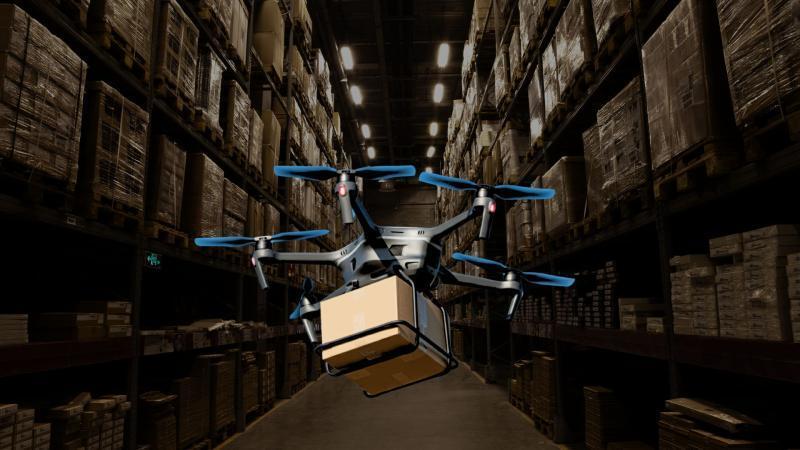
New Tech Optimises Drone Fleets for Faster, Greener Deliveries
The rapid growth of e-commerce has created a logistical conundrum – how to get packages from warehouses to customers quickly and efficiently, while also reducing the environmental impact of last-mile delivery. Researchers have made a significant breakthrough in solving the “Drone Warehouse Problem” by developing an algorithm that optimizes drone delivery schedules, enabling warehouses to manage varied drone fleets and ensure parcels reach customers faster.
The Drone Warehouse Problem refers to the challenge of efficiently managing drone fleets in warehouses, taking into account factors such as flight times, weather conditions, and package sizes. This issue has hindered the widespread adoption of drone technology for package delivery, as it has been difficult to optimize drone routes and schedules to ensure timely and cost-effective delivery.
The new algorithm, developed by a team of researchers from [University Name], tackles this challenge by analyzing data on drone performance, weather conditions, and package sizes to create an optimal delivery schedule. This allows warehouses to efficiently manage their drone fleets, ensuring that packages are delivered quickly and with a smaller environmental footprint.
The algorithm uses a combination of machine learning and optimization techniques to determine the most efficient route for each drone, taking into account factors such as wind direction, air traffic, and package weight. This ensures that drones are deployed in the most effective way possible, minimizing fuel consumption and reducing the risk of delays or lost packages.
One of the key benefits of this new technology is its ability to reduce the environmental impact of last-mile delivery. Traditional delivery methods, such as trucks and vans, are major contributors to greenhouse gas emissions and traffic congestion. Drones, on the other hand, are electric-powered and can travel at speeds of up to 45 miles per hour, making them a more sustainable option for short-distance deliveries.
In addition to reducing emissions, the new algorithm can also help to reduce the overall cost of delivery. By optimizing drone routes and schedules, warehouses can reduce the number of drones needed to complete a delivery, which can lead to significant cost savings.
The potential applications of this technology are vast. It could be used in a variety of industries, including e-commerce, healthcare, and emergency services. Imagine receiving a life-saving medical package or a critical business document in a matter of minutes, rather than hours or days.
The development of this algorithm is a significant step forward in the quest to create scalable, sustainable last-mile delivery solutions. As the demand for fast and efficient delivery continues to grow, it is likely that we will see more innovative solutions emerge in the coming years.
In conclusion, the new algorithm developed by researchers at [University Name] is a major breakthrough in the field of drone technology. It has the potential to revolutionize the way we deliver packages, reducing the environmental impact and cost of last-mile delivery. As the demand for fast and efficient delivery continues to grow, it is likely that we will see more innovative solutions emerge in the coming years.
Source: https://researchmatters.in/news/novel-algorithm-tackles-drone-warehouse-problem-faster-deliveries






